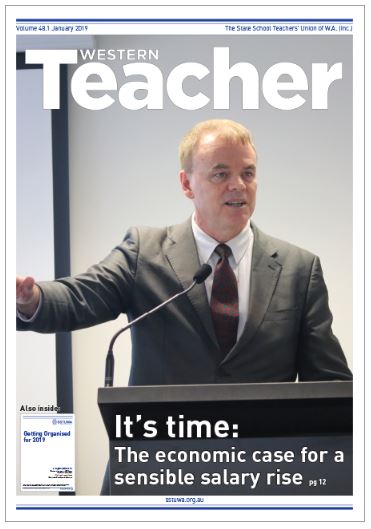Workers produce more, but get paid less. Business invests less in real capital, but their profits grow. Technology advances at breakneck pace, but so many jobs are degraded and menial (not to mention horribly paid). What gives? Australia’s labour market truly seems “upside down.”
In this article reprinted from Western Teacher magazine (published by the State School Teachers’ Union of WA), our Director Jim Stanford tries to explain these contradictory trends.
The article is based on a presentation to a recent SSTUWA delegates meeting in Perth.

Stanford provides a dual diagnosis for Australia’s labour market problems: an inadequate quantity of work, and the deteriorating quality of work. Egged on by government policies which have deliberately suppressed wages in so many workplaces, wage growth has fallen to postwar lows. This is now undermining Australia’s continued economic progress.
In addition to diagnosing what’s gone wrong in Australia’s labour market, Stanford also explains the numerous economic benefits of stronger collective bargaining systems so that workers can receive a fairer share of the economic pie: stronger consumer spending, more stable financial conditions, stronger government revenues, and less inequality.
To see the full issue of Western Teacher, or sign up for future editions, please visit the magazine’s website. We are grateful to Western Teacher for permission to reprint the article here!
Related documents
Between the Lines Newsletter
The biggest stories and the best analysis from the team at the Australia Institute, delivered to your inbox every fortnight.
You might also like
Corporate Profits Must Take Hit to Save Workers
Historically high corporate profits must take a hit if workers are to claw back real wage losses from the inflationary crisis, according to new research from the Australia Institute’s Centre for Future Work.
Stronger Wage Growth improves the Economy and the Budget
Stronger wage growth will deliver more money to workers and also improve the budget position buy delivering more tax revenue
Fair Work: 5.75% Award Wage Boost will not cause “Wage-Price Spiral”
Today’s 5.75% award wage increase is a necessary boost for the lowest paid workers but does not keep pace with inflation. The Fair Work Commission (FWC) has today explicitly said this increase “will consequently not cause or contribute to any ‘wage price spiral’”. Key Points: Award wage increase of 5.75% is less than inflation, which